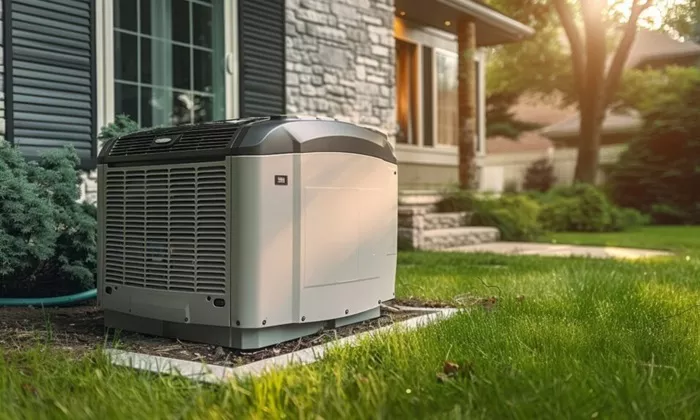Power outages can be frustrating and disruptive. A generator can keep your home running smoothly during emergencies. But connecting a generator to your home requires careful planning and execution. This guide will walk you through everything you need to know, from choosing the right generator to safely connecting it to your home’s electrical system.
Types of Generators for Home Use
Before connecting a generator, you need to choose the right type.
Here are the most common options:
Portable Generators
Portable generators are affordable and versatile. They are ideal for powering essential appliances during short outages. However, they require manual setup and fueling.
Inverter Generators
Inverter generators are quieter and more fuel-efficient than portable generators. They provide clean power, making them safe for sensitive electronics like laptops and smartphones.
Standby Generators
Standby generators are permanently installed and automatically turn on during a power outage. They can power your entire home but are more expensive and require professional installation.
Solar Generators
Solar generators use renewable energy and are environmentally friendly. They are ideal for small-scale power needs but may not be sufficient for whole-house backup.
Safety Precautions Before Connecting a Generator
Safety is the most important aspect of connecting a generator to your home.
Follow these precautions to avoid accidents:
Read the Manual
Always read the manufacturer’s instructions for your generator. Each model has specific requirements and safety guidelines.
Avoid Carbon Monoxide Poisoning
Never operate a generator indoors or in an enclosed space. Place it at least 20 feet away from your home, with the exhaust facing away from windows and doors.
Use Proper Extension Cords
If you’re using a portable generator, ensure you use heavy-duty, outdoor-rated extension cords that can handle the generator’s power output.
Install a Transfer Switch
A transfer switch is essential for safely connecting a generator to your home’s electrical system. It prevents backfeeding, which can be dangerous to utility workers and your home’s wiring.
Equipment Needed to Connect a Generator to Your Home
To connect a generator to your home, you’ll need the following equipment:
Transfer Switch
A transfer switch is a device that safely connects your generator to your home’s electrical panel. It ensures that power from the generator does not backfeed into the utility lines.
Generator Cords
Heavy-duty generator cords are necessary to connect your generator to the transfer switch or extension cords.
Interlock Kit (Optional)
An interlock kit is an alternative to a transfer switch. It allows you to safely switch between utility power and generator power using your existing electrical panel.
Outdoor Generator Enclosure
If you’re using a portable generator, consider investing in an outdoor enclosure to protect it from the elements.
Step-by-Step Guide to Connecting a Generator to Your Home
Follow these steps to safely connect your generator to your home:
Step 1: Choose the Right Generator
Select a generator that meets your power needs. Calculate the total wattage of the appliances you want to run and choose a generator with a slightly higher capacity.
Step 2: Install a Transfer Switch
Hire a licensed electrician to install a transfer switch. This device ensures safe and seamless switching between utility power and generator power.
Step 3: Position the Generator
Place the generator on a flat, stable surface outdoors. Ensure it is at least 20 feet away from your home and protected from rain or snow.
Step 4: Connect the Generator to the Transfer Switch
Use a heavy-duty generator cord to connect the generator to the transfer switch. Follow the manufacturer’s instructions for proper connection.
Step 5: Start the Generator
Turn on the generator and let it run for a few minutes to stabilize. Then, switch the transfer switch to the generator position to power your home.
Step 6: Monitor the Generator
Regularly check the generator’s fuel level and oil level. Ensure it is running smoothly and not overheating.
Maintenance Tips for Your Home Generator
Proper maintenance ensures your generator remains reliable during emergencies.
Follow these tips:
Regularly Check the Oil and Fuel Levels
Check the oil and fuel levels before each use. Change the oil as recommended by the manufacturer.
Run the Generator Periodically
Run your generator for 10-15 minutes every month to keep it in good working condition.
Inspect the Cords and Connections
Regularly inspect the generator cords and connections for wear and tear. Replace damaged cords immediately.
Store Fuel Safely
Store fuel in approved containers in a cool, dry place. Use fuel stabilizers to extend its shelf life.
Common Mistakes to Avoid When Connecting a Generator
Avoid these common mistakes to ensure a safe and efficient setup:
Overloading the Generator
Do not exceed the generator’s wattage capacity. Overloading can damage the generator and connected appliances.
Ignoring Local Codes and Regulations
Always follow local building codes and regulations when installing a generator. Obtain the necessary permits if required.
Skipping Professional Help
Unless you’re an experienced electrician, always hire a professional to install a transfer switch or interlock kit.
Using Improper Extension Cords
Using undersized or indoor-rated extension cords can cause overheating and fire hazards.
Conclusion
Connecting a generator to your home is a practical solution for power outages, but it requires careful planning and execution. By choosing the right generator, following safety precautions, and using the proper equipment, you can ensure a safe and reliable power source for your home. Regular maintenance and professional installation will keep your generator running smoothly for years to come.
Related topic:
- 5 Best Portable Gas Generators for Home Use
- 3 Top-Rated Home Backup Generators
- 3 Best Natural Gas Home Generators: A Comprehensive Guide

